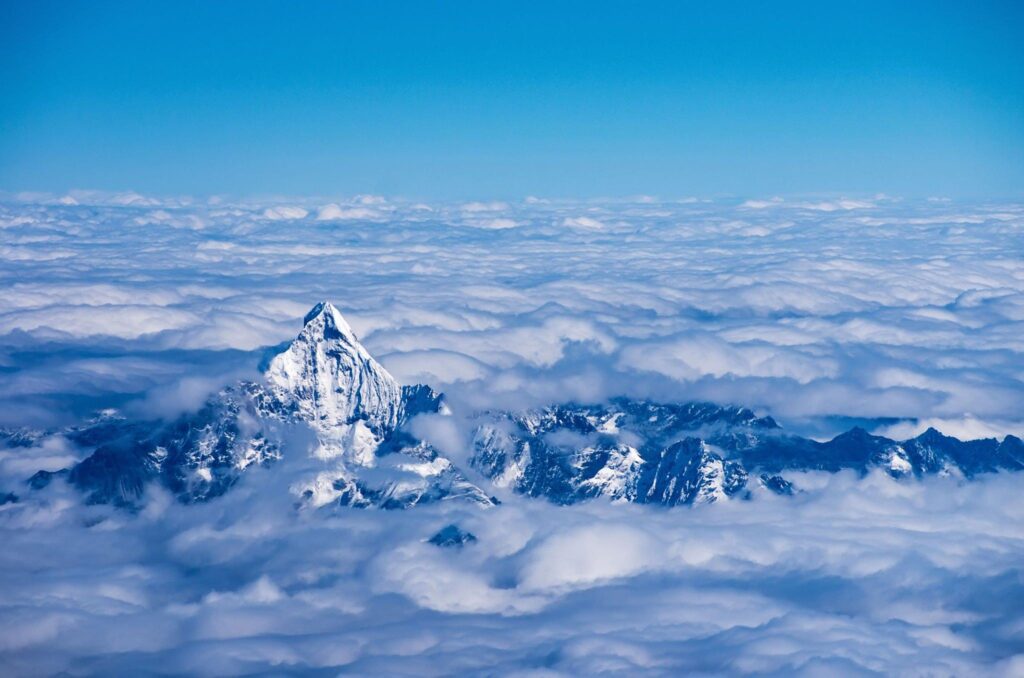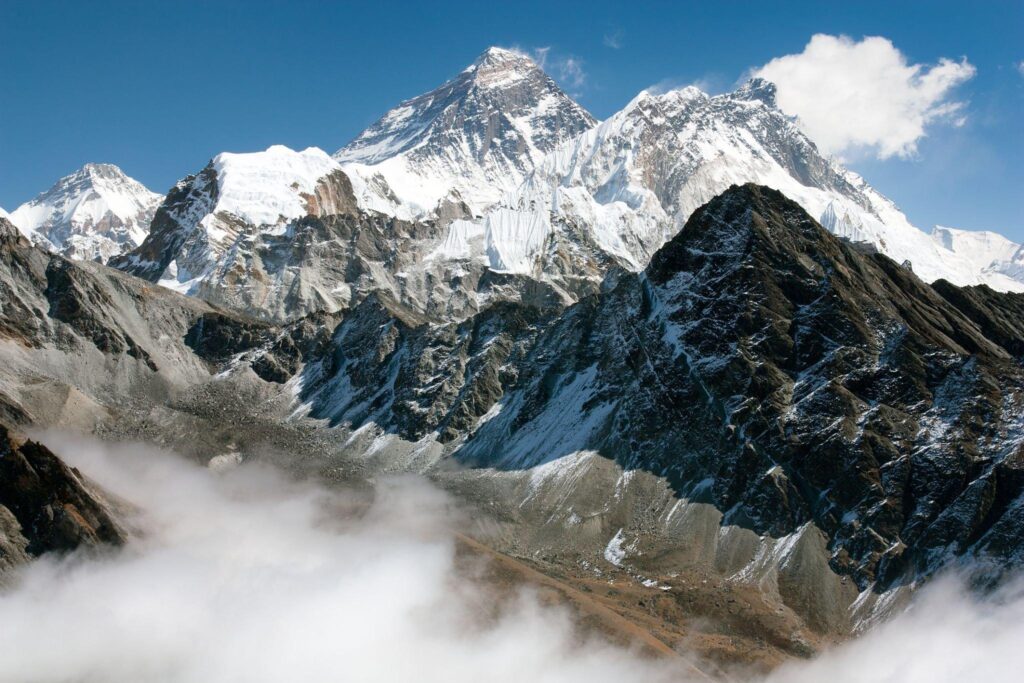Embark on an unforgettable expedition as you travel to the highest mountain peak in the world, Mount Everest. The journey to this majestic summit is a test of endurance, courage, and determination. Surrounded by stunning Himalayan landscapes, you’ll face challenges and triumphs, forging unforgettable memories along the way. Stand in awe at the peak, feeling a profound connection with nature and a sense of accomplishment like no other. Travel to Mount Everest for an adventure that will leave an indelible mark on your soul and inspire the explorer within

1. The Highest Mountain Peak – Mount Everest
At a staggering height of 29,032 feet (8,848 meters) above sea level, Mount Everest reigns as the highest peak on the planet. Located in the majestic Himalayas, on the border between Nepal and Tibet, it has lured adventurers and mountaineers for decades. The allure of conquering this formidable giant has given rise to countless tales of courage, determination, and the triumph of the human spirit.
2. Preparing for the Journey
A successful expedition to Mount Everest requires meticulous preparation and training. Climbers must be physically and mentally prepared to endure harsh conditions and challenging terrain. Months of rigorous training, including cardiovascular workouts, strength training, and high-altitude simulations, are essential to enhance one’s chances of success.
3. Choosing the Right Route
Mount Everest offers various routes to its summit, each with its own set of difficulties. The South Col route, starting from Nepal, is the most popular among climbers due to its relatively accessible path and established infrastructure. However, it still presents formidable challenges that demand respect and skill.
4. Gearing Up: Equipment and Gear
To conquer Mount Everest, climbers rely on specialized gear and equipment designed to withstand extreme conditions. From high-quality insulated clothing to state-of-the-art climbing equipment, every piece plays a crucial role in ensuring the safety and comfort of the climbers.
5. Climbing Permits and Logistics
Before commencing the climb, obtaining the necessary climbing permits is vital. Climbers must navigate bureaucratic processes and secure permission from the respective authorities. Additionally, arranging logistics, such as hiring experienced guides and porters, is essential for a smooth and well-supported journey.
6. The Climbing Experience
The ascent to the summit of Mount Everest is a journey of several stages, each presenting unique challenges. Climbers progress through base camps, ascending through the Khumbu Icefall, crossing treacherous ladders, and tackling steep ice and rock faces. The climb requires unwavering determination, physical prowess, and mental fortitude.
7. Altitude Sickness and Safety Measures
As climbers ascend to extreme altitudes, the risk of altitude sickness increases. The thin air at high altitudes can lead to severe health issues, including life-threatening conditions like High Altitude Pulmonary Edema (HAPE) and High Altitude Cerebral Edema (HACE). To mitigate these risks, climbers must acclimatize properly, take necessary precautions, and descend if any symptoms of altitude sickness arise.
8. A Glimpse of Sherpa Culture
Sherpas, the indigenous people of the Everest region, play an invaluable role in mountaineering expeditions. Known for their mountaineering expertise and strength, they often serve as guides and support staff for climbers. Understanding Sherpa culture adds depth and meaning to the climbing experience.
9. Savoring the Breathtaking Views
Upon reaching the summit, climbers are rewarded with awe-inspiring vistas that seem otherworldly. The world below appears miniature, and the vastness of the Himalayan landscape leaves one humbled and in awe of nature’s grandeur.
10. Preserving the Environment
With the growing popularity of Mount Everest expeditions, environmental concerns have come to the forefront. It is crucial for climbers and visitors to respect and protect the delicate ecosystem of the Everest region. Sustainable practices and responsible mountaineering are vital to ensure the preservation of this natural wonder for future generations.
11. Challenges and Triumphs
The journey to the highest mountain peak is filled with challenges and uncertainties. Climbers face unpredictable weather conditions, treacherous terrain, and physical and mental exhaustion. Yet, it is precisely these challenges that make the triumph of reaching the summit all the more gratifying.
12. Other Majestic Peaks to Explore
While Mount Everest holds the title of the highest peak, there are numerous other majestic mountains worldwide waiting to be explored by adventurous travelers. From the K2 in Pakistan to Denali in Alaska, each peak offers its own unique allure and demands a different set of skills and determination.

Conclusion
Traveling to the highest mountain peak in the world is a once-in-a-lifetime experience that pushes the boundaries of human capability and endurance. Standing atop Mount Everest is not just a physical achievement; it is a profound testament to the indomitable spirit of exploration and human perseverance. So, if you’re ready to embrace the adventurer within, start preparing for this incredible journey and make your dream of conquering the highest peak a reality.
FAQs:
- How long does it take to climb Mount Everest?
- The climbing duration can vary depending on factors like weather, route, and individual capabilities. On average, the ascent can take around 60 days, including acclimatization periods.
- What is the best time of year to climb Mount Everest?
- The climbing season typically occurs during spring (April to May) and autumn (September to November) when weather conditions are relatively stable.
- How dangerous is climbing Mount Everest?
- Climbing Everest carries inherent risks due to extreme altitudes, avalanches, and adverse weather. Proper preparation, training, and experienced guides are crucial to minimizing these risks.
- How much does it cost to climb Mount Everest?
- The cost of an Everest expedition can vary significantly, ranging from $30,000 to over $100,000, depending on the operator, services provided, and logistics.
- How many people have successfully reached the summit of Mount Everest?
- As of the latest data, over 5,000 individuals have successfully reached the summit of Mount Everest, while many others have attempted and experienced various outcomes.
